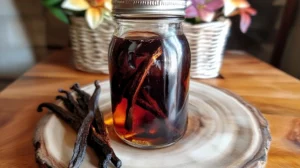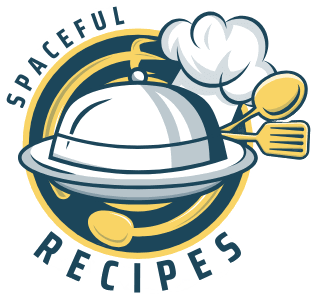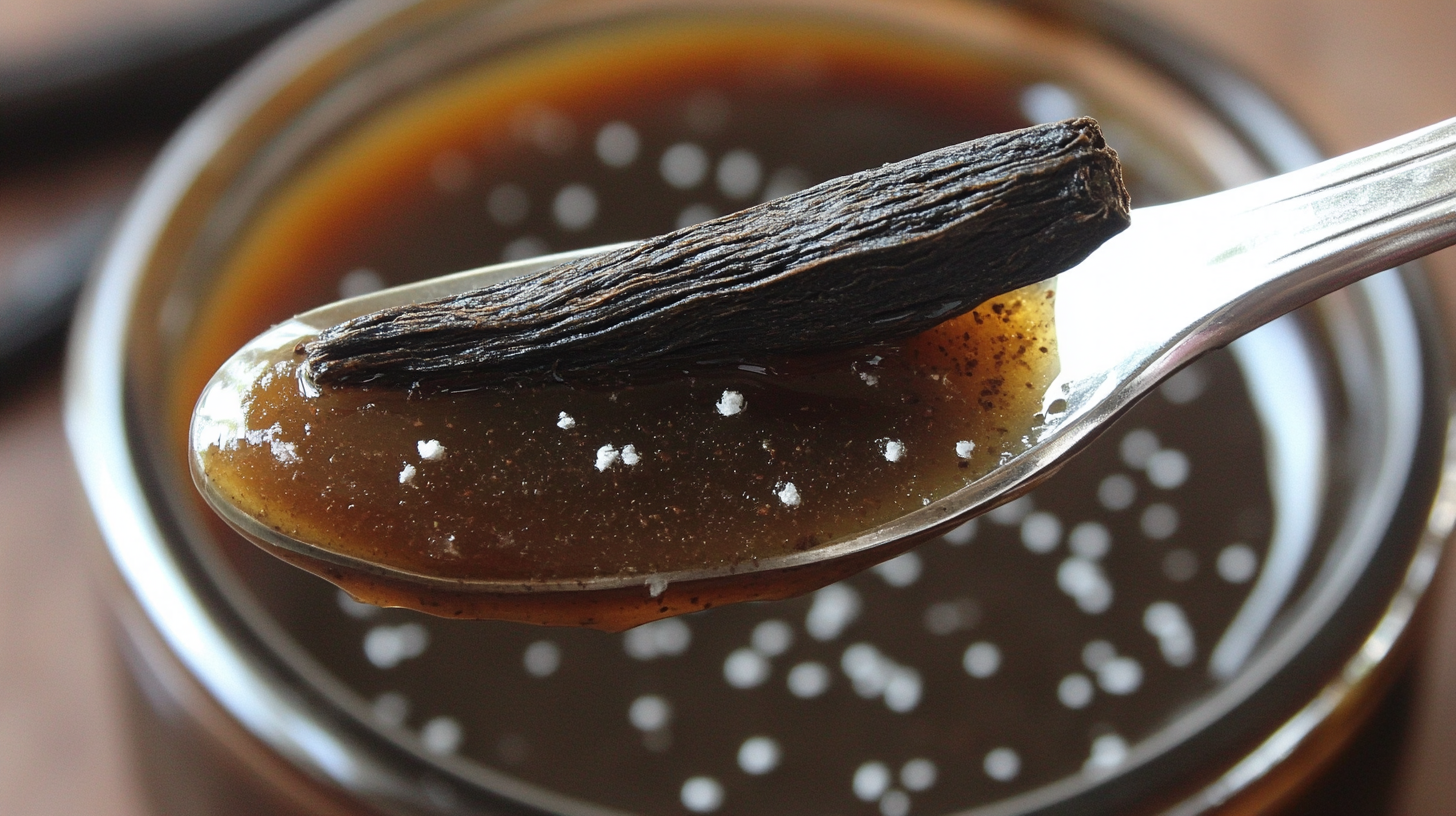What is Vanilla Paste?
Vanilla paste is a flexible baking ingredient. It is made from vanilla bean seeds mixed with a syrupy blend. This blend often contains sugar, water, and sometimes a thickener. Its thick texture and speckled look make it a great alternative to vanilla extract or whole beans. Many bakers love vanilla paste for its rich flavor and the pretty flecks of vanilla seeds it adds to recipes.
The Origins of Vanilla Paste
The vanilla paste comes from the growing use of vanilla in cooking. In the past, vanilla beans were the primary way to get vanilla flavor. However, they took a lot of time to prepare. Later, vanilla extract became a quicker option, but it lacked the beauty of the seeds.
Vanilla paste was created to combine the best of both. It is as easy to use as extract and as visually appealing as beans. It first became popular with professional chefs. Soon, homebakers started using it to make their desserts look and taste better.
Benefits of Using Vanilla Paste in Baking
Vanilla paste has many great advantages. These make it an essential item in any baker’s kitchen:
- Stronger Flavor: It gives a deeper vanilla taste compared to the extract.
- Elegant Look: The tiny vanilla seeds add a gourmet feel to recipes.
- Simple to Use: You don’t need to prepare it like vanilla beans.
- Very Versatile: It works in many recipes, from cakes to ice cream.
By using vanilla paste, you can make desserts that are both delicious and professional-looking.
Difference Between Vanilla Paste, Extract, and Beans
Knowing the differences between these vanilla options helps you pick the right one for your recipes:
- Vanilla Beans: These are whole pods filled with seeds. They give the purest flavor but need preparation.
- Vanilla Extract: This is a liquid made by soaking vanilla beans in alcohol. It is easy to measure but lacks the seeds’ visual effect.
- Vanilla Paste: This thick mixture includes seeds and extract. It delivers both strong flavor and a beautiful look.
Vanilla extract is perfect for quick recipes, but vanilla paste shines in dishes that need both flavor and presentation.
Essential Ingredients
Making your own vanilla paste is simple with a few essential ingredients. Here is what you need:
- Vanilla Beans: These give the paste its flavor and the speckled look.
- Sweetener: Use sugar, honey, or agave syrup to add sweetness and preserve it.
- Thickener: Add gum Arabic or a little cornstarch for a smooth texture.
- Vanilla Extract: This boosts the flavor and complements the beans.
- Water: It helps mix the ingredients and binds them together.
These ingredients make a tasty and fragrant paste that is perfect for baking.
To examine pairings that complement vanilla’s bold flavors, you might enjoy learning about traditional pesto pasta accompaniments. These culinary explorations can broaden your understanding of how flavors work together.
How to Select the Best Vanilla Beans for Paste
Choosing good vanilla beans is key to an excellent vanilla paste recipe. Follow these tips:
- Pick Plump Beans: Good beans should be moist, flexible, and slightly shiny.
- Know the Source: Beans from Madagascar, Tahiti, and Mexico are often the best quality.
- Avoid Dry Beans: If they are brittle or cracked, they have lost their flavor.
- Smell Them: Fresh vanilla beans should have a strong, sweet aroma.
Using high-quality beans insures your paste has the best flavor and smell.
Step-by-Step Vanilla Paste Recipe
Here is a simple vanilla paste recipe you can make at home:

- Prepare the Beans: Split 4-6 vanilla beans down the middle. Use a knife to scrape out the seeds.
- Mix Ingredients: Combine the seeds, 1 cup of sugar or honey, 1/2 cup of water, and one teaspoon of vanilla extract in a small pot.
- Thicken the Mix: Add 1/2 teaspoon of gum arabic or cornstarch. Stir until it dissolves.
- Heat Slowly: Warm the mix on low heat, stirring often, until it slightly thickens.
- Cool and Store: Let it cool, then pour it into a clean jar. Please keep it in the fridge for up to six months.
This recipe makes a rich and flavorful paste that you can use in many desserts.
For those who enjoy experimenting with flavors, avoiding sourdough mistakes can also inspire techniques for precision in baking recipes, including vanilla-based desserts.
Tips for Storing Vanilla Paste
To keep your vanilla paste fresh, follow these simple storage tips:
- Use a Sealed Jar: Store it in a glass jar with a tight lid to keep air out.
- Refrigerate It: Keeping it cool helps preserve its taste and quality.
- Use a Clean Spoon: Always use a clean spoon to scoop out the paste. This prevents bacteria from growing.
- Check Freshness: If the paste smells or looks off, make a new batch.
With proper storage, your homemade vanilla paste will stay fresh and ready to use for months.
Common Mistakes to Avoid When Making Vanilla Paste
Making vanilla paste at home is fun, but mistakes can ruin the results. Here are some common errors and how to avoid them:
- Using poor-quality beans: Always choose premium vanilla beans for a strong flavor.
- Not measuring ingredients properly: Inaccurate ratios can make the paste too thick or too runny.
- Storing it the wrong way: Keep your paste in a cool, dark place to maintain its freshness.
- Blending too much: Over-mixing can give your paste a grainy texture.
- Adding too much sugar: Too much sweetener can hide the vanilla’s natural flavor.
By using high-quality ingredients and following these tips, you’ll make perfect vanilla paste recipes.
Vanilla Paste Substitutes: When and How to Use Them
When vanilla paste isn’t available, you can use substitutes. Here’s what works best:
- Vanilla extract: Replace one tablespoon of paste with one teaspoon of extract.
- Vanilla powder: Use this dry alternative in a 1:1 ratio.
- Whole vanilla beans: Scrape the seeds from one bean as a replacement.
- Imitation vanilla: It’s affordable, but the flavor is less intense.
Each substitute works in specific recipes. For example, vanilla powder is better for dry dishes, while extract blends well in liquids. Constantly adjust other ingredients to maintain the right texture and flavor.
Creative Recipes
Vanilla paste adds fantastic flavor to various dishes. Try these creative ideas:

- Vanilla pancakes: Stir a teaspoon of paste into your batter for extra flavor.
- Homemade latte: Mix a small amount of paste into your coffee for a café-like taste.
- Ice cream: Blend paste with cream to make rich, smooth ice cream.
- For savory dishes, add vanilla paste to sauces for seafood or roasted vegetables.
These recipes are easy to try, and using vanilla paste recipes makes even simple meals special.
If you’re keen on experimenting further, check out these protein cinnamon roll recipes for complementary baked goods. They’re a great way to expand your repertoire while focusing on health-conscious options.
Baking Tips with Vanilla Paste
To get the best results, follow these tips for using vanilla paste in baking:
- Mix evenly: Stir the paste well to avoid flavor pockets.
- Combine with wet ingredients first: This insures even distribution in your batter or dough.
- Improve with spices: Pair vanilla paste with cinnamon or nutmeg for extra depth.
- Use just enough: A small amount of paste goes a long way.
- Adjust sugar levels: Since the paste is sweetened, reduce the sugar in your recipe.
These tips help you make delicious baked goods using vanilla paste recipes.
Health Benefits
Vanilla paste not only tastes good but also offers health benefits:
- Rich in antioxidants: Vanilla beans contain natural compounds that protect your cells.
- Soothes inflammation: The paste’s ingredients help reduce inflammation in the body.
- Improves mood: The pleasant smell of vanilla has a calming effect.
- Lowers sugar needs: Its strong flavor lets you use less sugar in recipes.
Adding vanilla paste recipes to your meals can improve both flavor and health.
Commercially Available
If making vanilla paste isn’t for you, many great options are available in stores. Consider these factors:
- Ingredient quality: Choose brands that use real vanilla beans.
- Sugar content: Look for low-sugar options if you want a healthier choice.
- Consistency: Pick a smooth paste for easy use.
- Trusted brands: Popular names like Nielsen-Massey and Heilala offer excellent quality.
These tips make it easier to select the best vanilla paste for your recipes.
Vegan and Gluten-Free Vanilla Paste Recipe Options
If you follow a special diet, try this vegan and gluten-free vanilla paste recipe:
- Ingredients:
- 6 vanilla beans
- ½ cup coconut sugar or maple syrup
- ½ cup water
- 1 teaspoon tapioca starch (optional)
- Steps:
- Split and scrape the vanilla beans.
- Simmer beans, sugar, and water for 10 minutes on low heat.
- Blend the mixture until smooth.
- Strain it if needed, then store it in an airtight jar.
This recipe works well for anyone who loves vanilla paste recipes.
Troubleshooting Homemade Vanilla Paste Recipes
If your vanilla paste doesn’t turn out right, try these solutions:
- Too runny: Add a little cornstarch or cook it longer to thicken.
- Bitter flavor: Avoid burning the beans or overcooking the sugar.
- Grainy texture: Blend more or strain the mixture for a smoother paste.
- Short shelf life: Store it in a dark, cool place to make it last longer.
Fixing these issues will improve your vanilla paste recipe results.
FAQs
Q: What’s the difference between vanilla extract and paste?
Vanilla paste is thicker and has bean specks, giving a stronger flavor.
Q: Can I make vanilla paste without sugar?
Yes, use alternatives like agave syrup or erythritol.
Q: How long does homemade vanilla paste last?
It stays fresh for up to 6 months if stored in the fridge.
Q: Is vanilla paste vegan?
Most pastes are vegan but always check the label.
Q: Can I freeze vanilla paste?
Freezing is not recommended. Store it in the fridge instead.
Vanilla paste recipes are versatile and increase many dishes. By avoiding mistakes, trying substitutes, and following tips, you’ll create fabulous recipes. Whether you’re baking, cooking, or making drinks, vanilla paste takes your meals to the next level.

